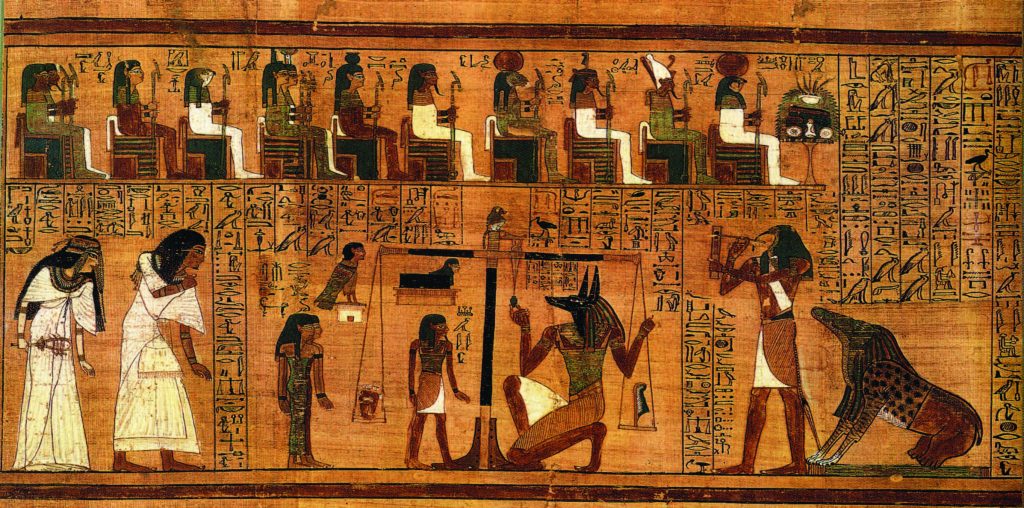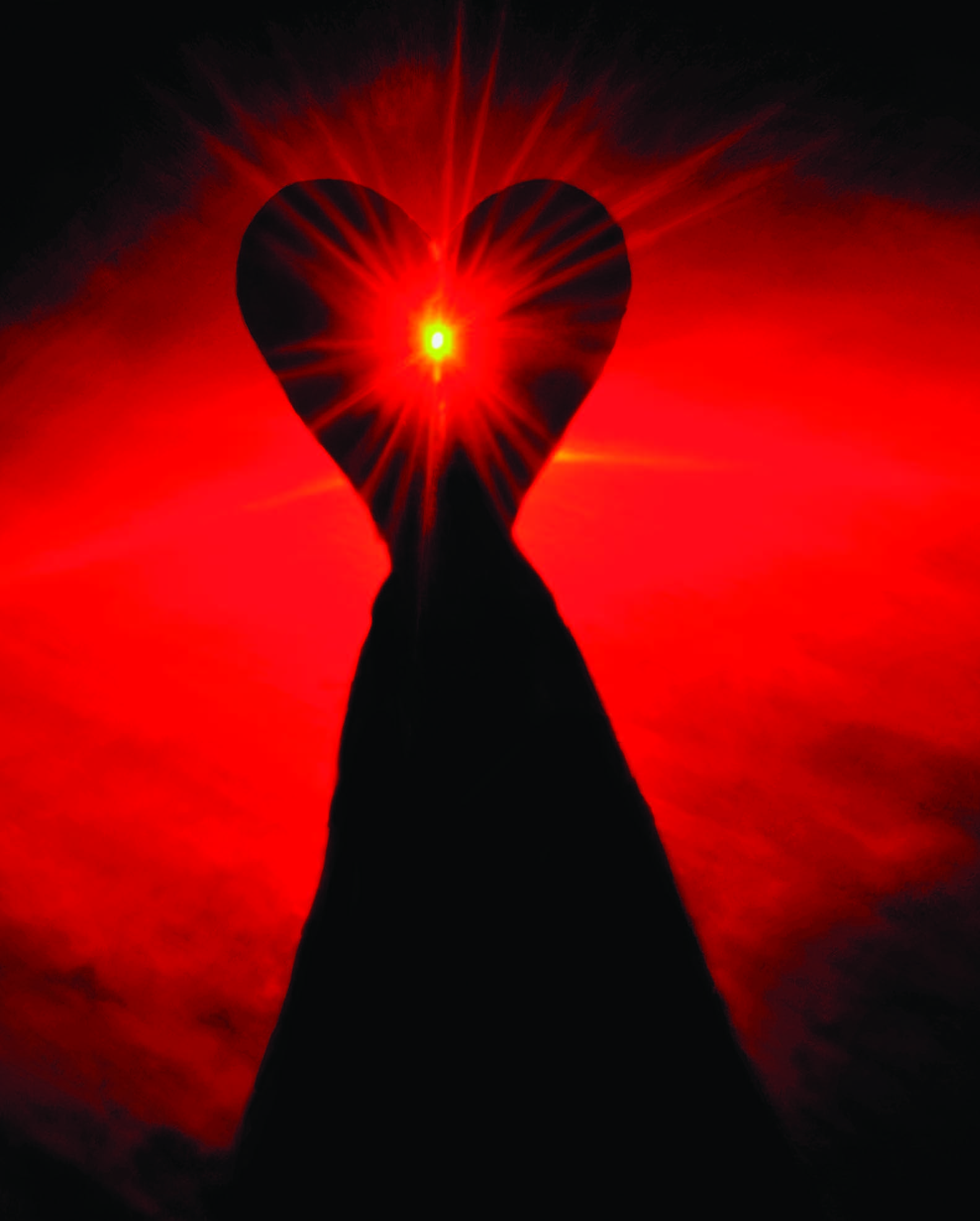
From the Christian esoteric tradition, a path beyond the mind
Put the mind in the heart…. Put the mind in the heart…. Stand before the Lord with the mind in the heart.” From page after page in the Philokalia, that hallowed collection of spiritual writings from the Christian East, this same refrain emerges. It is striking in both its insistence and its specificity. Whatever that exalted level of spiritual attainment is conceived to be—whether you call it “salvation,” “enlightenment,” “contemplation,” or “divine union”—this is the inner configuration in which it is found. This and no other.
It leaves one wondering what these old spiritual masters actually knew and—if it’s even remotely as precise and anatomically grounded as it sounds—why this knowledge has not factored more prominently in contemporary typologies of consciousness.
Part of the problem as this ancient teaching falls on contemporary ears is that we will inevitably be hearing it through a modern filter that does not serve it well. In our own times the word “heart” has come to be associated primarily with the emotions (as opposed to the mental operations of the mind), and so the instruction will be inevitably heard as “get out of your mind and into your emotions”—which is, alas, pretty close to 180 degrees from what the instruction is actually saying.
Yes, it is certainly true that the heart’s native language is affectivity—perception through deep feelingness. But it may come as a shock to contemporary seekers to learn that the things we nowadays identify with the feeling life—passion, drama, intensity, compelling emotion—are qualities that in the ancient anatomical treatises were associated not with the heart but with the liver! They are signs of agitation and turbidity (an excess of bile!) rather than authentic feelingness. In fact, they are traditionally seen as the roadblocks to the authentic feeling life, the saboteurs that steal its energy and distort its true nature.
And so before we can even begin to unlock the wisdom of these ancient texts, we need to gently set aside our contemporary fascination with emotivity as the royal road to spiritual authenticity and return to the classic understanding from which these teachings emerge, which features the heart in a far more spacious and luminous role.
According to the great wisdom traditions of the West (Christian, Jewish, Islamic), the heart is first and foremost an organ of spiritual perception. Its primary function is to look beyond the obvious, the boundaried surface of things, and see into a deeper reality, emerging from some unknown profundity, which plays lightly upon the surface of this life without being caught there: a world where meaning, insight, and clarity come together in a whole different way. Saint Paul talked about this other kind of perceptivity with the term “faith” (“Faith is the substance of things hoped for, the evidence of things not seen”), but the word “faith” is itself often misunderstood by the linear mind. What it really designates is not a leaping into the dark (as so often misconstrued) but a subtle seeing in the dark, a kind of spiritual night vision that allows one to see with inner certainty that the elusive golden thread glimpsed from within actually does lead somewhere.
Perhaps the most comprehensive definition of this wider spiritual perceptivity is from Kabir Helminski, a modern Sufi master. I realize that I quote it in nearly every book I have written, but I do so because it is so fundamental to the wisdom tradition that I have come to know as the authentic heart of Christianity. Here it is yet again:
We have subtle subconscious faculties we are not using. Beyond the limited analytic intellect is a vast realm of mind that includes psychic and extrasensory abilities; intuition; wisdom; a sense of unity; aesthetic, qualitative and creative faculties; and image-forming and symbolic capacities. Though these faculties are many, we give them a single name with some justification for they are working best when they are in concert. They comprise a mind, moreover, in spontaneous connection to the cosmic mind. This total mind we call “heart.”1
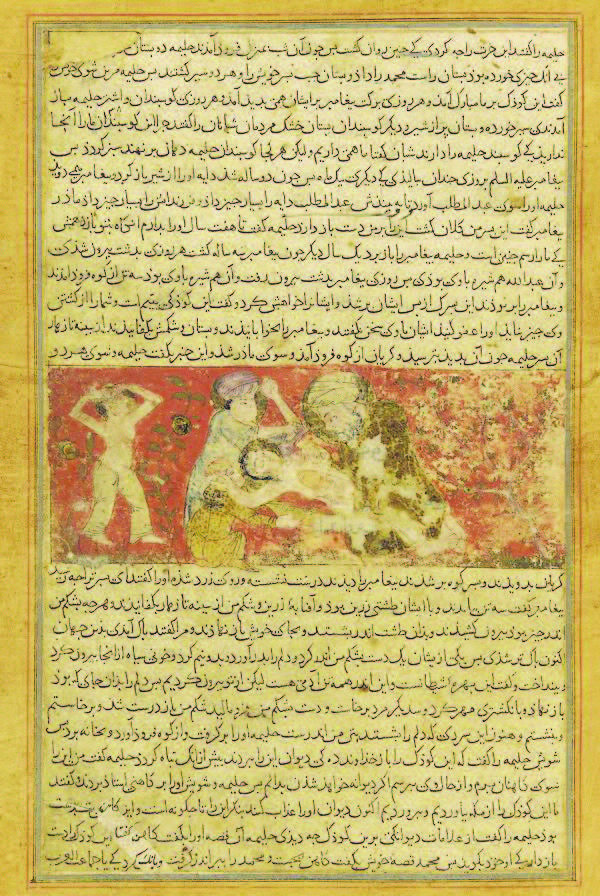
“The heart,” Helminski continues, is the antenna that receives the emanations of subtler levels of existence. The human heart has its proper field of function beyond the limits of the superficial, reactive ego-self. Awakening the heart, or the spiritualized mind, is an unlimited process of making the mind more sensitive, focused, energized, subtle, and refined, of joining it to its cosmic milieu, the infinity of love.2
Now it may concern some of you that you’re hearing Islamic teaching here, not Christian. And it may well be true that this understanding of the heart as “spiritualized mind”— “the organ prepared by God for contemplation”3—has been brought to its subtlest and most comprehensive articulation in the great Islamic Sufi masters. As early as the tenth century, Al-Hakîm al Tirmidhî’s masterful Treatise on the Heart laid the foundations for an elaborate Sufi understanding of the heart as a tripartite physical, emotional, and spiritual organ.4 On this foundation would gradually rise an expansive repertory of spiritual practices supporting this increasingly “sensitive, focused, energized, subtle, and refined” heart attunement.
But it’s right there in Christianity as well. Aside from the incomparable Orthodox teachings on Prayer of the Heart collected in the Philokalia, it’s completely scriptural. Simply open your Bible to the Beatitudes (Matthew 5:8) and read the words straight from Jesus himself: “Blessed are the pure in heart, for they shall see God.”
We will return to what “pure in heart” means in due course. But clearly Jesus had a foundational grasp on the heart as an organ of spiritual perception, and he had his own highly specific method for catalyzing this quantum leap in human consciousness. I have written extensively about this in my book The Wisdom Jesus, in which I lay out the principles of his kenotic (“letting go”) spirituality as a pathway of conscious transformation leading to nondual awakening. You will see there how this goal formed the core of his teaching, hidden in plain sight for twenty centuries now. I will be drawing on this material from time to time as it becomes pertinent to our present exploration. For now, the essential point is simply to realize that the teaching on the heart is not intrinsically an “Islamic” revelation, any more than it is a “Christian” one. If anything, its headwaters lie in that great evolutionary incubator of Judaism, in which more and more in those final centuries before the Common Era, the great Israelite prophets begin to sense a new evolutionary star rising on the horizon of consciousness. Yahweh is about to do something new, about to up the ante in the continuing journey of mutual self-disclosure that has formed the basis of the covenant with Israel. The prophet Ezekiel gets it the most directly, as the following words of revelation tumble from his mouth, directly from the heart of God:
I will take you from the nations and gather you from all the countries, and bring you into your own land. I will sprinkle clean water upon you, and you shall be clean from all your uncleannesses, and from all your idols I will cleanse you. A new heart I will give you, and a new spirit I will put within you; and I will remove from your body the heart of stone and give you a heart of flesh. I will put my spirit within you and make you follow my statutes and be careful to observe my ordinances. Then you shall live in the land I gave to your ancestors, and you shall be my people and I will be your God. (Ezekiel 36:24–28)
A new interiority is dawning on the horizon, a new capacity to read the pattern from within: to live the covenant without a need for external forms and regulations, simply by living it from an inner integrity. And for the first time in Western history, this capacity to see from within is explicitly linked to the heart, and specifically to a “heart of flesh.”
Without any attempt to end-run the massive theological and historical parameters that have grown up around this issue, my bare-bones take on Jesus is that he comes as the “master cardiologist,” the next in the great succession of Hebrew prophets, to do that “heart surgery” first announced by Ezekiel. And his powerfully original (at least in terms of anything heretofore seen in the Semitic lands) method of awakening heart perceptivity—through a radical nonclinging or “letting go”—will in fact reveal itself as the tie rod connecting everything I am talking about in this book.
Do I Really Mean the Physical Heart?
Not to be naive here, but yes. We are indeed talking about the physical heart, at least insofar as it furnishes our bodily anchor for all those wondrous voyages into far-flung spiritual realms.
Again, the Eastern Orthodox tradition is not in the least equivocal on this point. Lest there be any tendency to hear the word as merely symbolic of some “innermost essence” of a person, the texts direct us immediately to the chest, where the sign that prayer is progressing will be a palpable physical warmth:
To stand guard over the heart, to stand with the mind in the heart, to descend from the head to the heart—all these are one and the same thing. The core of the work lies in concentrating the attention and the standing before the invisible Lord, not in the head but in the chest, close to the heart and in the heart. When the divine warmth comes, all this will be clear.5
The following instruction is even more specific:
When we read in the writings of the Fathers about the place of the heart which the mind finds by way of prayer, we must understand by this the spiritual faculty that exists in the heart. Placed by the creator in the upper part of the heart, this spiritual faculty distinguishes the human heart from the heart of animals…. The intellectual faculty in man’s soul, though spiritual, dwells in the brain, that is to say in the head: in the same way, the spiritual faculty which we term the spirit of man, though spiritual, dwells in the upper part of the heart, close to the left nipple of the chest and a little above it.6

While the sheer physicality of this may make some readers squirm, the contemporary phenomenologist Robert Sardello is another strong advocate for a full inclusion of the physical heart in any serious consideration of the spirituality of the heart. When he speaks of the heart, as he makes clear in his remarkable book Silence: The Mystery of Wholeness, he is always referring to “the physical organ of the heart,” which merits this special consideration precisely because “it functions simultaneously as a physical, psychic, and spiritual organ.”7 It is this seamlessly tripartite nature of the heart’s field of activity that bestows its unusual transformative powers. While there are many spiritual traditions that focus on “the heart as the instrument through which religious practices take place,” Sardello feels that “these traditions do not focus on the inherent activity of the heart, which is already an act of a spiritual nature.”8
To demonstrate what this “inherently spiritual nature” of the heart might feel like, Sardello leads his readers on a profound voyage of discovery into the inner chambers of their own heart. Wielding those two classic tools of inner work, attention and sensation, he teaches us how to access the heart through concentrated sensation (rather than visualization or emotion) and there discover its inherent vibrational signature as “pure intimacy…intimacy without something or someone attached to that intimacy.”9
I have to say I followed that exercise several times and was astonished by the results. I had experienced something of that “pure intimacy” before, as that sort of golden tenderness that sometimes surrounds a period of Centering Prayer. But never had I experienced it with such force or clarity, as a distinct inner bandwidth resonating in perfect synchrony with (in Kabir Helminski’s words) “its cosmic milieu, the infinity of love.” No wonder the embodied aspect of heart spirituality is so important! For it is only through sensation—that is, “attention concentrated in the heart”—that this experience of utter fullness and belonging becomes accessible.10
Sardello is not the only voice in the field. There is now a substantial and growing body of “bridge literature” linking classic spiritual teachings on the heart with emerging discoveries in the field of neurobiology. I have already mentioned the pioneering work of the HeartMath Institute, but I want to call attention to two other fascinating and useful books for the spiritually adventurous nonspecialist: The Biology of Transcendence by Joseph Chilton Pearce11 and The Secret Teaching of Plants by Stephen Harrod Buhner.12 Marshaling considerable scientific data in a format easily accessible to a lay reader, each of these books demonstrates how contemporary science has taken us far beyond the notion of the heart as a mechanical pump to revision it as “an electromagnetic generator,”13 working simultaneously across a range of vibrational frequencies to perform its various tasks of internal and external self-regulation and information exchange. (An “organ of spiritual perception,” after all, can be understood in this context as simply an electromagnetic generator picking up information at far subtler vibrational bandwidths.) Both books call attention, as does the HeartMath Institute, to the intricate feedback loops between heart and brain—almost as if the human being were expressly wired to facilitate this exchange, which Pearce sees as fundamentally between the universal (carried in the heart) and the particular (carried in the brain). As he expresses it, “The heart takes on the subtle individual colors of a person without losing its essential universality. It seems to mediate between our individual self and a universal process while being representative of that universal process.”14 While such bold statements may make hard-core scientists writhe, from the spiritual side of the bridge it is easily comprehensible and brings additional confirmation that “putting the mind in the heart” is not merely a quaint spiritual metaphor but contains precise and essential information on the physiological undergirding of conscious transformation.
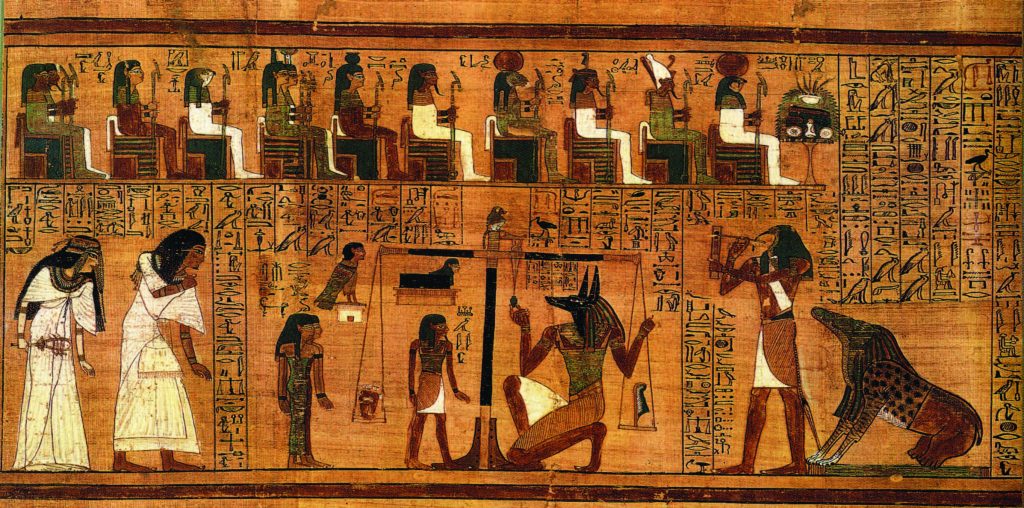
What Gets in the Way?
According to Western understanding, the heart does not need to be “grown” or “evolved.” Every heart is already a perfect holograph of the divine heart, carrying within itself full access to the information of the whole. But it does need to be purified, as Jesus himself observed. In its spiritual capacity, the heart is fundamentally a homing beacon, allowing us to stay aligned with those “emanations from more subtle levels of existence” Helminski refers to, and hence to follow the authentic path of our own unfolding. But when the signals get jammed by the interference of lower-level noise, then it is no longer able to do its beaconing work.
Unanimously, the Christian wisdom tradition proclaims that the source of this lower-level noise is “the passions.” As the Philokalia repeatedly emphasizes, the problem with the passions is that they divide the heart.15 A heart that is divided, pulled this way and that by competing inner agendas, is like a wind-tossed sea: unable to reflect on its surface the clear image of the moon.
Here again is a teaching that tends to set contemporary people’s teeth on edge. I know this from personal experience, because the issue comes up at nearly every workshop I give. To our modern Western way of hearing, “passion” is a good thing: something akin to élan vital, the source of our aliveness and motivation. It is to be encouraged, not discouraged. At a recent workshop I led, a bishop approached me with some concern and explained that in his diocese, following the recommendations of a church consultant, he had managed to boost morale and productivity by significant percentages simply by encouraging his clergy “to follow their passions.”
Well-nigh universally today, the notion of “passionlessness” (a quality eagerly sought after in the ancient teachings of the desert fathers and mothers) equates to “emotionally brain dead.” If you take away passion, what is left?
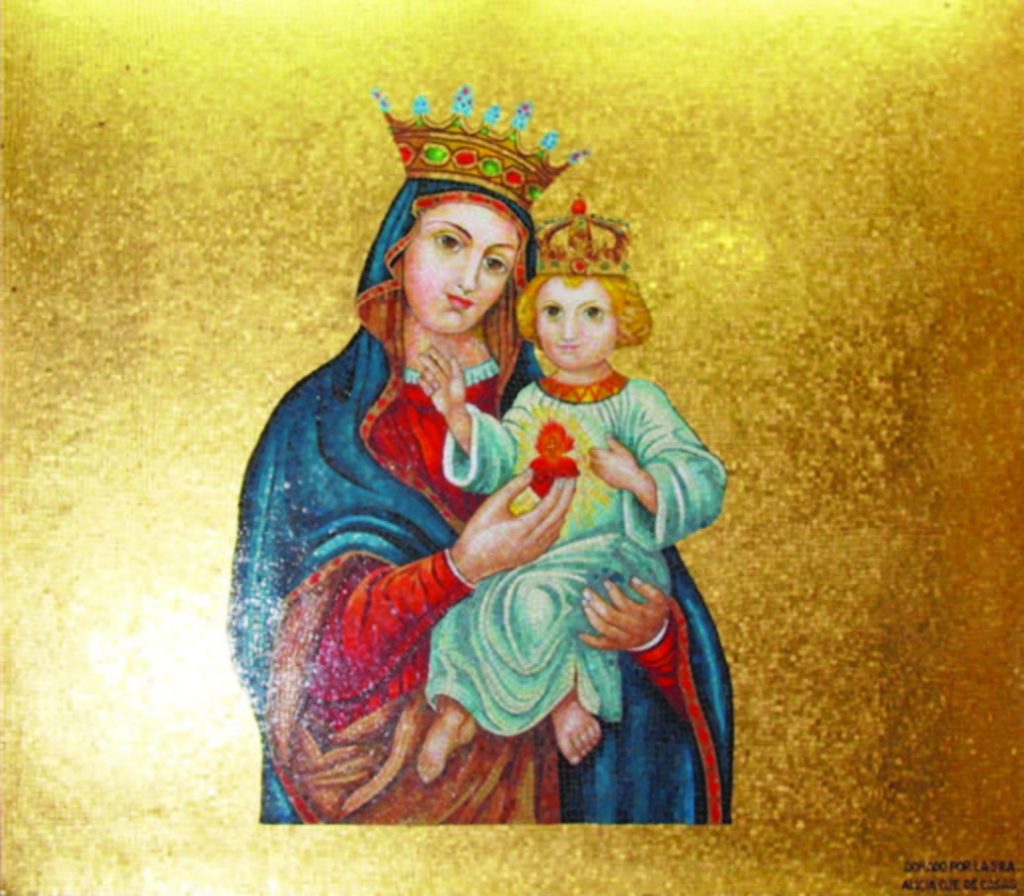
So once again we have to begin with some decoding.
If you consult any English dictionary, you will discover that the word “passion” comes from the Latin verb patior, which means “to suffer” (passio is the first-person singular). But this still doesn’t get us all the way, because the literal, now largely archaic, meaning of the verb “to suffer” (to “undergo or experience”) is literally to be acted upon. The chief operative here is the involuntary and mechanical aspect of the transaction. And according to the traditional wisdom teachings, it is precisely that involuntary and mechanical aspect of being “grabbed” that leads to suffering in the sense of how we use the term today. Thus, in the ancient insights on which this spiritual teaching rests, passion did not mean élan vital, energy, or aliveness. It designated being stuck, grabbed, and blindly reactive.
This original meaning is clearly uppermost in the powerful teaching of the fourth-century desert father Evagrius Ponticus. Sometimes credited with being the first spiritual psychologist in the Christian West, Evagrius developed a marvelously subtle teaching on the progressive nature of emotional entanglement, a teaching that would eventually bear fruit in the fully articulated doctrine of the seven deadly sins. His core realization was that when the first stirrings of what will eventually become full-fledged passionate outbursts appear on the screen of consciousness, they begin as “thoughts”—logismoi, in his words—streams of associative logic following well-conditioned inner tracks. At first they are merely that—“thought-loops,” mere flotsam on the endlessly moving river of the mind. But at some point a thought-loop will entrain with one’s sense of identity—an emotional value or point of view is suddenly at stake—and then one is hooked. A passion is born, and the emotions spew forth. Thomas Keating has marvelously repackaged this ancient teaching in his diagram of the life cycle of an emotion,16 a core part of his Centering Prayer teaching. This diagram makes clear that once the emotion is engaged, once that sense of “I” locks in, what follows is a full-scale emotional uproar—which then, as Father Keating points out, simply drives the syndrome deeper and deeper into the unconscious, where it becomes even more involuntary and mechanically triggered.
What breaks the syndrome? For Evagrius, liberation lies in an increasingly developed inner capacity to notice when a thought is beginning to take on emotional coloration and to nip it in the bud before it becomes a passion by dis-identifying or disengaging from it. This is the essence of the teaching that has held sway in our tradition for more than a thousand years.
Now, of course, there are various ways of going about this disengaging. Contemporary psychology has added the important qualifier that disengaging is not the same thing as repressing (which is simply sweeping the issue under the psychological rug) and has developed important methodologies for allowing people to become consciously present to and “own” the stew fermenting within them. But it must also be stated that “owning” does not automatically entail either “acting out” or verbally “expressing” that emotional uproar. Rather, the genius of the earlier tradition has been to insist that if one can merely back the identification out—that sense of “me,” stuck to a fixed frame of reference or value—then the energy being co-opted and squandered in useless emotional turmoil can be recaptured at a higher level to strengthen the intensity and clarity of heart perceptivity. Rather than fueling the “reactive ego-self,” the energy can be “rejoined to its cosmic milieu, the infinity of love.” And that, essentially, constitutes the goal of purification—at least as it has been understood in service of conscious transformation.
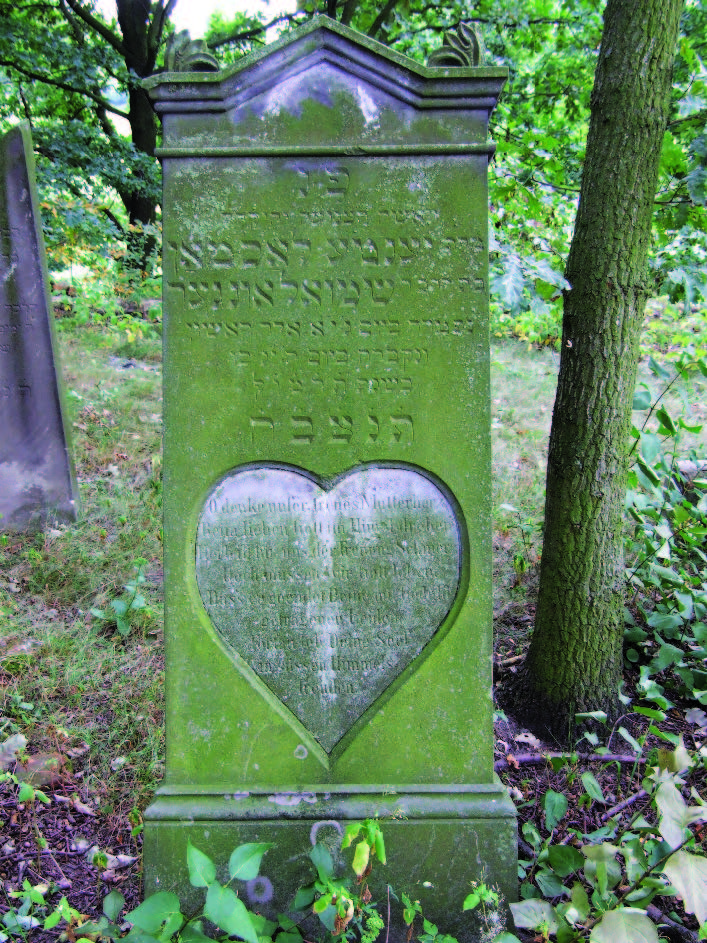
Emotion versus Feeling
Here again, we have an important clarification contributed by Robert Sardello. Echoing the classic understanding of the Christian Inner tradition (I first encountered this teaching in the Gurdjieff Work), Sardello points out that most of us use the terms “feeling” and “emotion” interchangeably, as if they are synonyms. They are not. Emotion is technically “stuck” feeling, feeling bound to a fixed point of view or fixed reference point. “We are not free in our emotional life,” he points out, since emotion always “occurs quite automatically as a reaction to something that happens to us.”17 It would correspond to what Helminski calls “the heart in service to the reactive ego-self.”
Beyond this limited sphere opens up a vast reservoir of feelingness. Here the currents run hard and strong, always tinged with a kind of multivalence in which the hard-and-fast boundaries distinguishing one emotion from another begin to blend together. Happiness is tinged with sadness, grief touches at its bottomless depths the mysterious upwelling of comfort, loneliness is suffused with intimacy, and the deep ache of yearning for the absent beloved becomes the paradoxical sacrament of presence. “For beauty is only the beginning of a terror we can just scarcely bear,” observes Rilke, “and the reason we adore it so is that it serenely disdains to destroy us.”18
Such is the sensation of the heart beginning to swim in those deeper waters, awakening to its birthright as an organ of spiritual perception. And it would stand to reason, of course, that the experience is feeling-ful because that is the heart’s modus operandi; it gains information by entering the inside of things and coming into resonance with them. But this is feeling of an entirely different order, no longer affixed to a personal self-center, but flowing in holographic union with that which can always and only flow, the great dynamism of love. “Feeling as a form of knowing”19 becomes the pathway of this other mode of perceptivity, more intense, but strangely familiar and effortless.
The great wager around which the Western Inner tradition has encamped is that as one is able to release the heart from its enslavement to the passions, this other heart emerges: this “organ of contemplation,” of luminous sight and compassionate action. For what one “sees” and entrains with is none other than this higher order of divine coherence and compassion, which can be verified as objectively real, but becomes accessible only when the heart is able to rise to this highest level and assume its cosmically appointed function. Then grace upon grace flows through this vibrating reed and on out into a transfigured world: transfigured by the very grace of being bathed in this undivided light.
“Blessed are the pure in heart, for they shall see God.” In this one sentence, the whole of the teaching is conveyed. What remains is for us to come to a greater understanding of how this purification is actually accomplished: a critical issue on which Christian tradition is by no means unanimous. This will be the subject of our next chapter. ♦
1 Kabir Helminski, Living Presence: A Sufi Guide to Mindfulness and the Essential Self (New York: Tarcher/Perigree Books, 1992), 157.
2 Ibid., 158.
3 Sidney H. Griffith, “Merton, Massignon, and the Challenge of Islam,” in Rob Barker and Gray Henry, eds., Merton and Sufism: The Untold Story (Louisville, KY: Fons Vitae, 1999), 65.
4 For extensive bibliographical information on this work, see “A Treatise on the Heart,” trans. Nicholas Heer, (ibid., 79–88).
5 E. Kadloubovsky and E. M. Palmer, eds., The Art of Prayer: An Orthodox Anthology (London: Faber and Faber, 1966), 194.
6 Ibid., 190.
7 Robert Sardello, Silence: The Mystery of Wholeness (Benson, NC: Goldenstone Press, 2006), 82.
8 Ibid.
9 Ibid., 86.
10 No wonder the embodied aspect of heart spirituality is so important! For if Sardello is right here (and my own work confirms that he is), then the stunning conclusion is that there is no lack. That primordial hunger for intimacy and belonging we so frantically project onto others in our attempt to find fulfillment is fulfilled already, there in the “infinity of love” already residing holographically in our own hearts, once we have truly learned to attune to its frequency and trust that with which it reverberates. In this sense, our physical heart is the quintessential “treasure buried in the field.”
11 Joseph Chilton Pearce, The Biology of Transcendence:A Blueprint of the Human Spirit (Rochester, VT: Park Street Place, 2002).
12 Stephen Harrod Buhner, The Secret Teachings of Plants: The Intelligence of the Heart in the Direct Perception of Nature (Rochester, VT: Bear and Company, 2004).
13 Ibid., 71.
14 Pearce, 64–65.
15 For a particularly clear and forceful discussion of this point, see E. Kadloubovsky and G. E. H. Palmer, trans., Unseen Warfare, trans. E. Kadloubovsky and G. E. H. Palmer (Crestwood, NY: St. Vladimir’s Seminary Press, 1987), 241–44.
16 Reproduced in Cynthia Bourgeault, Centering Prayer and Inner Awakening (Cambridge, MA: Cowley Publications, 2004), 136.
17 Sardello, 72.
18 Rainer Maria Rilke, Duino Elegies, trans. J. B. Leishman and Stephen Spender (New York: W. W. Norton & Co., 1939), 21.
19 Sardello, 72.
From The Heart of Centering Prayer by Cynthia Bourgeault © 2016. Reprinted in arrangement with Shambhala Publications, Inc. Boulder, CO.
From our current issue Parabola Volume 42, No. 1, “The Search for Meaning,” Spring 2017. This issue is available to purchase here. If you have enjoyed this piece, consider subscribing.
